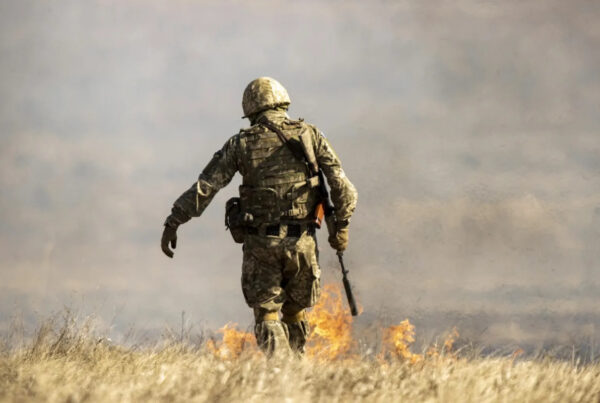Plumes of smoke, engulfing the atmosphere in a blackened haze. Back at ground level, the sky turns blood red as flames leaping 200 feet into the air, devouring plants and animals alike. Harrowing scenes of charred bodies of koalas falling dead out of trees. Videos of hundreds of kangaroos, fleeing walls of fire.
Since September, Australia’s deadly wildfires have destroyed more than 1,500 homes and burned about five million hectares of land. That’s roughly the size of Belgium.
Prime Minister Scott Morrison told reporters that a total of 24 people have died from the blazes. Scientists estimate that more than 800 million animals might die as a result of the fires.
Every summer, Australia has a fire season, where bushfires can start and spread easily. When these do occur, natural causes like lightning strikes in drought-affected areas are to blame.
But the country is getting hotter, sustaining the fire season and making the flames harder to contain. Many areas in the south-east of Australia, including Victoria and New South Wales are the hardest hit compared to areas in western Australia. These areas usually experience the fire season, but never this intensely.
Estimates from Australia’s Bureau of Meteorology (BoM) suggests that in 2019, the average temperature in the country was 1.52 degrees Celsius above average. Temperatures reached an average of 40.9 degrees Celsius by mid-December.
Drought is another factor. Reports from the BoM show that last October was the driest October on record for Southern Australia. In the region of New South Wales where firefighters are combating the worst of the blazes, rainfall fell 36 per cent below the 1960-1990 average.
Human activity also plays a role in the fires. Australia is one of the world’s largest per capita greenhouse gas emitters. Recently, it was ranked as the worst performing country on national and international policy out of 57 countries on a climate change performance index by a series of think tanks including the NewClimate Institute, the Climate Action Network and Germanwatch.
The report looks at national climate action across categories of emissions, renewable energy, energy use and policy. Across all four categories, Australia was ranked 51 out of 57 countries.
Activists have been critical of the government’s climate policies, which experts say are contributing to one of the worst bushfire seasons the country has seen since 2009, when 173 people were killed by wildfires in Victoria.
Even Australian voters are concerned that Australia isn’t doing enough. The Guardian’s Essential Poll in November revealed at 60 per cent of the 1,083 sampled voters believe Australia should be doing more to combat climate change.
The problem is, this looks and feels all too familiar.
Millions of native plants, fauna and animals are dying. Citizens are displaced, injured or dead. Homes have been reduced to rubble. And to top it off, in power is a government whose actions aim to subvert combating climate change.
A year ago in August, the Amazon was burning. Satellites from the National Institute for Space Research recorded over 74,000 fires between January and August 2019.
The cause? Experts say Brazilian President Jal Bolsonaro had displayed a lack of concern for Brazil’s environmental security. There are other similarities between these cases. The governments of both Brazil and Australia have fire management policies in place which suppress the practice of fire practices.
In Australia, these fire practices are called “cultural burns.” Generally, Indigenous groups examine the composition of the forest and then start controlled fires. These controlled fires prevent fire risks, rejuvenate local flora and protect native animal habitat.
A similar practice occurred in Brazil. Paleontological studies of the Amazon rainforest reveals that ancient farmers burned space for agriculture. However, it wasn’t destruction for the sake of space. These farmers planted several crops among the trees, increased the growth of edible plants like acai and enriched poor soils using a combination of compost, waste and charcoal.
Another familiar action was the response of the international community. Soon after the first reports of the fires came in, the community mobilized, expressing outrage over the incident. The G7 even offered $20 million in aid to help combat the fires.
How many fires will it take until governments recognize that their actions (or lack thereof) are the source of the problem?
Australia’s wildfires and the destruction of the Amazon in Brazil are all harsh reminders that no country is immune to the devastating effects of climate change and the policies that contribute to it. It’s no longer sufficient for politicians to turn a blind eye to climate emergencies. Similar disasters could happen in any country.
But what do we do when our governments express a reluctance to recognize and mitigate the problem?
We do the one thing any good citizen does. We make our voices heard.
So when you do scroll across a story on the Australian wildfires take a moment to really read through the details and consider donating. Then, turn your eyes towards your own country and ask yourself if their practices and policies are helping the world combat the disastrous effects of climate change. Tell your government that it should matter. If they don’t listen, take your voice to the ballot box and elect someone who will. Remember, we all live under the same sky and right now, it’s on fire.
This article has been updated to include recent estimates of the wildlife casualties in Australia
Disclaimer: Any views or opinions expressed in articles are solely those of the authors and do not necessarily represent the views of the Mackenzie Institute








